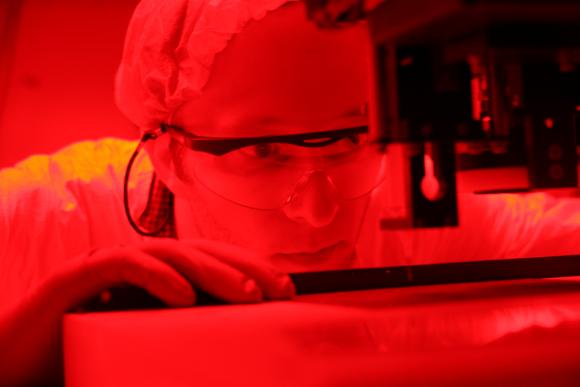PROVIDENCE, R.I. [Brown University] — Brown University and Draper Laboratory intend to establish a center to help lead America’s research and development of alternative energy sources and to develop processes to use existing energy more wisely, officials have announced.
The Center for Energy Research will turn promising research discoveries into products that help tackle energy challenges in the United States, according to a memorandum of understanding (MOU) signed between the parties that represents the first step toward establishing the center.
The agreement will leverage each partner’s unique capabilities to produce a variety of energy-related solutions. Brown will concentrate initially on its research profile in the physical sciences — involving faculty and graduate students particularly in chemistry, engineering and physics — while Draper, an independent, nonprofit engineering organization based in Cambridge, Mass., will rely on its experience in transitioning laboratory discoveries into useable technologies.
“If you want to go from the lab to the marketplace, you need the research part, and you need the development part,” said Peter Weber, chair of the chemistry department at Brown and one of the architects of the proposed partnership. “You can’t do it all alone. You need someone else.”
“Brown’s strengths in basic scientific research are a great complement to Draper’s expertise in technology development. This partnership will really provide us both with the chance to create truly new and innovative solutions for the nation’s energy challenges. To be successful, we need each other,” said Len Polizzotto, principal director of strategic business development at Draper.
According to Clyde Briant, vice president for research at Brown, the Brown-Draper collaboration intends to capitalize on federal plans to make funding available for alternative energy research and ideas to change Americans’ energy habits.
“From basic research all the way through to commercial application, we believe this partnership will make us attractive to funding agencies in an increasingly competitive funding environment,” Briant said.
The MOU is already facilitating partnerships among faculty and staff at the two institutions. They have submitted joint proposals to the U.S. Department of Energy for research and development funding, and plan to develop similar proposals in the near future. Specifically, research money is being sought in these areas:
- carbon capture and reuse: Develop novel approaches to store the global warming gas carbon dioxide and innovative ways to convert carbon into fuel sources that do not pollute the environment;
- energy generation: Research new technologies for direct-carbon fuel cells that can utilize carbon-based waste for electricity production;
- energy storage: Create new energy storage capabilities so that alternative energy sources such as wind and solar energy can be effectively integrated into the nation's power grid;
- energy efficiency: Investigate and improve combustion efficiency of existing carbon-based power sources like coal plants.
“The Brown-Draper collaboration has already begun to create new, compelling ideas for energy R&D. Brown’s expertise in combustion, carbon chemistry, fuel cells, and other energy-related areas is impressive and very accessible. Our goal is to shepherd tomorrow’s technologies sprouting in Brown’s labs to production in industry,” said Michael Feng, Draper manager for the Brown-Draper collaboration.
During the next few months, the parties will continue to finalize the terms of the partnership, including identifying additional research projects, licensing or commercial possibilities and establishing an advisory board (see fact sheet).
Briant said another benefit of the partnership to Brown would be to unite energy-related research that has been taking place in labs throughout campus. “This will help us define and concentrate all those energy research lines into a single area,” he said.
Draper Laboratory
Draper Laboratory is a nonprofit engineering research and development laboratory serving the national interest in applied research, development, advanced technical education, and technology transfer. Areas of technology development include guidance, navigation, and control; inertial, strategic and tactical systems; miniature low-power systems; information and decision systems; complex, reliable systems; biomedical engineering; and energy solutions.

